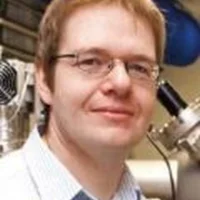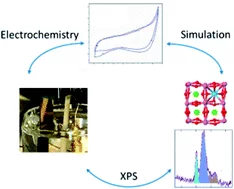Understanding the mechanism of the oxygen evolution reaction (OER) on perovskite materials is of great interest for the development of more active catalysts. Despite a lot of literature reports, the complexity of catalytic systems and the need for surface/interface sensitive in situ and operando spectroscopic tools render the detection of active sites and the understanding of reaction mechanisms challenging. In this work, we carried out and compared in situ and ex situ ambient pressure X-ray photoelectron spectroscopy experiments on a La0.2Sr0.8CoO3−δ perovskite OER catalyst. The experimental results show that segregated surface strontium, which is present in the as prepared sample, is leached into the electrolyte after immersion, leading to surface cobalt active site enrichment. Such a cobalt-enriched oxide surface evolves into a new phase, whose spectral feature is detected in situ and after the OER. With the help of theoretical simulations, such a species is assigned to cobalt oxyhydroxide, providing direct evidence of its formation and surface segregation during the oxygen evolution reaction.

